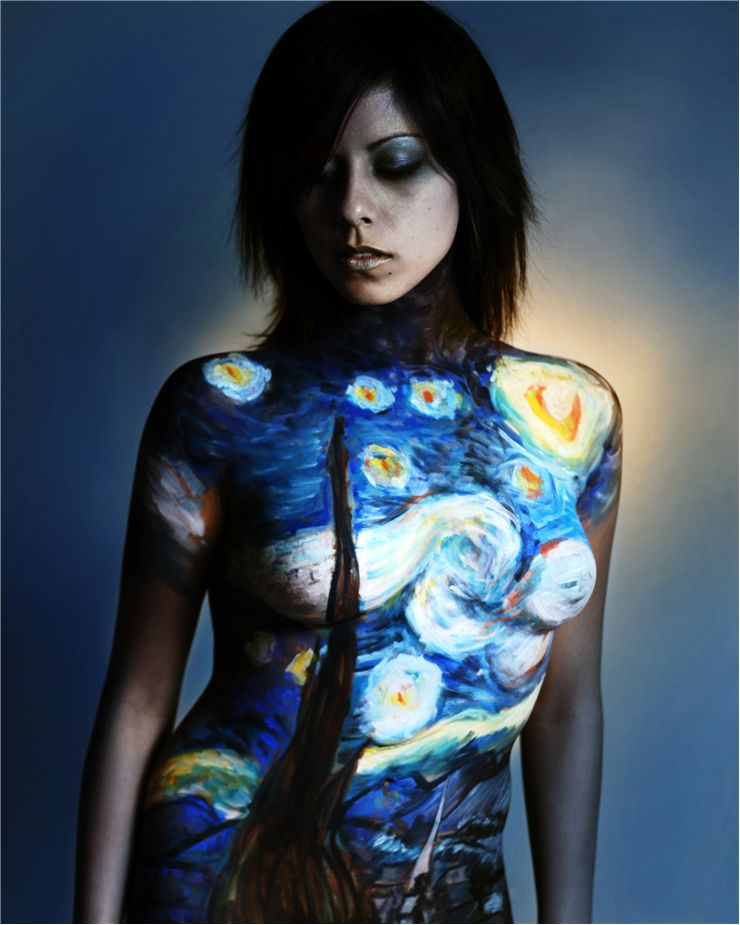History of Body Painting - Types of Body Painting
Body painting is what it says on a tin – an art of painting on a body. It's an old art and people panted their bodies with temporary colors since the Prehistory. If applied to the whole body it is called body painting while those applied to only face or hand is called face or hand painting.
Early tribes and peoples use body painting in their ceremonies. They used clay and natural pigments like local plants and wet charcoal and some of them still use them today because indigenous people of Australia, New Zealand, the Pacific islands and parts of Africa still practice ritual and celebratory body painting. One of the better known form of temporary body painting is Mehndi, which uses dyes made of henna and is still popular in India, the Middle East, and from relatively recently, in the West. Body painting is also a centuries old practice among clowns and actors.
Full body painting as an art form experienced a revival in Western society around the 1960s. Before that, there were public performances of body art but not too successful. For instance in 1933, on the World's Fair in Chicago, Max Factor, Sr. and his model Sally Rand were arrested for causing a public disturbance. Max Factor, Sr. body-painted Rand with his new make-up line. Because of the moral norms of that time towards nudity, body paint needed to wait and it became a minor alternative art movement in the 1950s and 1960s in which paint was used to cover the body of a model and then a model would transfer the paint to a medium like paper or canvas by touching or rolling on it.
Those were the beginnings. In the nineties, Joanne Gair brought body painting to mainstream with here August 1992 Vanity Fair's “Demi's Birthday Suit” cover of Demi Moore. Today we have, around the world, annual body painting festivals like World Bodypainting Festival in Pörtschach, Austria where professional and amateur body painters show their skills. Other places where body painting is often presented are football matches, rave parties and protests.
Face painting is a subtype of body painting where only the face of a model is painted. It is also an old art and ancient peoples painted their faces as a camouflage for hunting, for religious reasons, and military reasons again as a camouflage and as a membership in a military unit. It was common for young women, during the hippie movement of the late 1960s, to decorate their cheeks with flowers or peace symbols. Today, theme parks, parties and festivals have face painting booths for children.
Hand art is painting of hands to make them appear like something else, like an animal or some other object.
Colors used for body painting have to be chosen carefully to avoid allergies. They are chosen to be non-toxic, non-allergenic, and that they can easily be washed away. A person cannot not asphyxiated if their whole body is painted (like a myth says) but it can suffer a heat stroke if a liquid latex is used.
